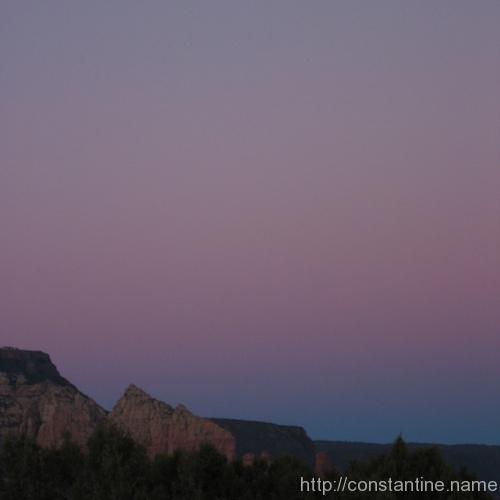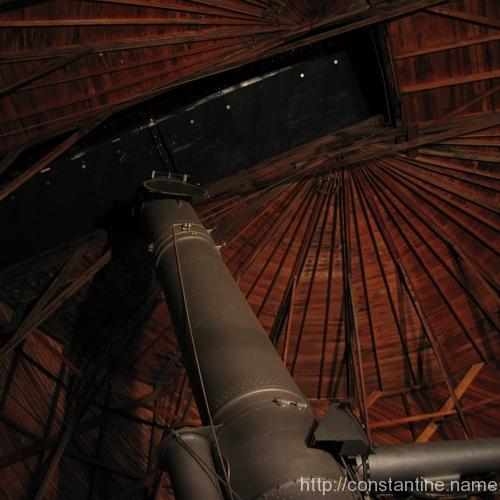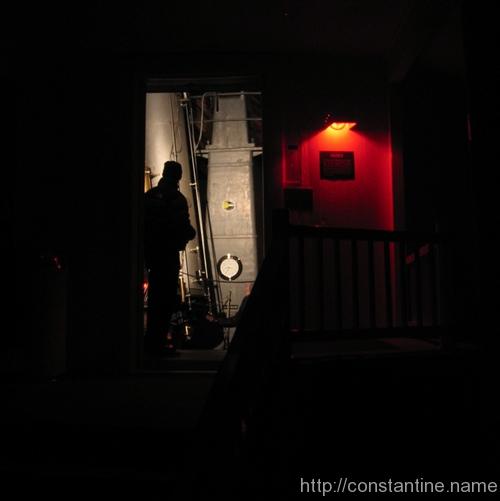And then the light of an older heaven was in my eyes
~ Doug Muir from, Occasional paper: The Light of an Older Heaven
and when my vision cleared, I saw Titans.
— Alan Moore
slip:4ucooa2.
A wonderful quote to open a wonder-filled article.
ɕ
And then the light of an older heaven was in my eyes
~ Doug Muir from, Occasional paper: The Light of an Older Heaven
and when my vision cleared, I saw Titans.
— Alan Moore
slip:4ucooa2.
A wonderful quote to open a wonder-filled article.
ɕ
Are we restless and driven to explore, as Sagan says? Will going into space bring humanity together or will we simply bring inequalities and injustices with us? The idea of humans as benevolent explorers sits somewhere between two extremes: those who argue it is our “destiny” to “colonize” other worlds, and those who ask why we’re going into outer space at all.
~ Michael P. Oman-Reagan, from Wandering Among the Stars
slip:4usacu1.
We’re definitely going. Whether we like it or not, there are enough of us who are unable to not try to wander outside our little cave and over the next hill, sabertooth tigers or no. I think a much better question is: What have we lost, now that many (most?) of us are no longer in touch with the night sky. My answer: A lot. And if we continue and lose our curiosity entirely, everything.
I’ve had the insanely rare privilege of experiencing the real night sky on many occasions. (For one example, once in a very special place, on a moonless night, Mars cast my shadow.) In all my experiences, I still believe I’ve only glimpsed a part of my human heritage. What would we be like if we all were fully in touch with our heritage?
ɕ
My journey of growth has been ascending levels of perspective shifts. Some of us don’t get to go on that journey because of external and evil forces or because of the random, initial conditions they drew at the beginning of their lives. While I don’t understand what my self even is, I do understand that hiding—ignoring reality—is not going to move me further along on my journey of self-discovery.
“Daytime” is us closing our eyes and pretending it makes infinity go away.
~ Randall Munroe from, xkcd: Under the Stars
slip:4uxoaa3.
Munroe has gone on quite a journey. I think everyone far enough along on their needs-satisfaction curve (anyone who’s ever watched entertainment or played a video game is far enough along) would be moved, inspired, made to laugh and cry, by reading all of Munroe’s cartoons.
This cartoon is number 2,849. He publishes a cartoon Mondays, Wednesdays, and Fridays. So, he’s published cartoons for about 950 weeks. About 18 years.
ɕ
Jupiter’s second Galilean Moon, Europa, with its interior ocean, predominantly crater-less surface, and crisscrosses of cracks and ridges spanning entire hemispheres, makes it one of the most fascinating planetary bodies ever observed. These unique geologic features are possibly indicative of liquid water traveling to the surface from its deep ocean, making Europa a hot spot for the exploration and study of life beyond Earth, also known as astrobiology.
~ Laurence Tognetti from, Will Europa finally answer, ‘Are we alone?’
slip:4uuiwi1.
My mind boggles. We haven’t quite created intelligence that exceeds our own, but we appear to be close (for better or for worse I can’t really say.) But I’ve been occasionally suffering from vertigo thinking: I may live to see it. The thing that has fascinated us for so long— The thing that I’ve read and seen in fiction my entire life— I may yet live to see that.
But when we find life somewhere besides upon our precious blue marble… I’m gonna lose my mind. Life on (in?) Europa seems bonkers, right? There’d be absolutely no light in that ocean… and yet. We find the bottom of our own tiny (compared to Europa’s) oceans teaming with life around sources of heat. That sounds exactly like Europa.
Also, you should totally go watch the film, Europa Report . . .
ɕ
For it’s always that way with the sacred value of life. We forget it as long as it belongs to us, and give it as little attention during the unconcerned hours of our life as we do the stars in the light of day. Darkness must fall before we are aware of the majesty of the stars above our heads.
~ Stefan Zweig
slip:4a1064.
Almost fifty years after it was detected, the Wow! Signal continues to tantalize and defy explanation. […] In 2020, interest in this candidate [extra-terrestrial intelligence] signal was revitalized when Cabellaro identified a Sun-like star in the vicinity of the sky where the Wow! Signal was detected. If the analysis is correct, this famous signal may have come from a Sun-like star located 1,800 light-years away.
~ Matt Williams from, There Could Be Four Hostile Civilizations in the Milky Way
slip:4uuite1.
More amazing is that actual progress continues to be made towards understanding the original signal’s origin. Fifty years ago, the area of the sky was known to contain a bunch of stars. Today? We know which of them have planets. …and which of those stars have a planet in the so-called habitable zone. The article is both a good introduction to the famous (among astronomy enthusiasts) signal and a good story about continued research.
And just ignore the article’s click–bait title, which comes from a tangential discussion about whether we should only listen for extraterrestrial intelligence or actually try to contact ET.
ɕ
Under one square metre of undisturbed ground in the Earth’s mid-latitudes there might live several hundred thousand small animals. Roughly 90% of the species to which they belong have yet to be named. One gram of this soil – less than a teaspoonful – contains around a kilometre of fungal filaments.
~ George Monbiot from, The secret world beneath our feet is mind-blowing – and the key to our planet’s future
slip:4uteei1.
There’s mind–boggling complexity in the microscopic realm.
Here’s a quick zoom towards the macroscopic: If you imagine the Earth the size of a peppercorn, then the moon would be a pin-head about 2.5″ inches away. At this scale, the sun is an 8″ ball, sitting 14 yards from the peppercorn Earth. How far away, at this same scale, is the next closest star? It’s thousands of miles at this scale to the Centauri star system (a 4 year trip at the speed of light.) How far is it across our just-average-sized Milky Way galaxy? …and how many stars are here, with our cozy Sol? …and how far to the next galaxy? …how many galaxies? Frankly, I’m confident there’s other life—even other intelligent life—out there. But, will we ever meet each other across such vast gulfs of emptiness?
ɕ
Titan is like Earth with its rivers, lakes, and seas filled by rain, but as stated, this is liquid methane and ethane as opposed to liquid water on Earth. Like Earth, Titan also has sand dunes, but they are made of hydrocarbons instead of silicate-based substances. Also, much like Earth, Titan is known for having a seasonal liquid transport cycle, also known as the water cycle on Earth, linking atmosphere, land, and oceans.
~ Laurence Tognetti from, Titan is an Alien World, but Surprisingly Familiar – Universe Today
slip:4uuiti1.
Back in the 1980s I read a lot of science fiction weaving epic tales and describing alien landscapes. These days, I continue to read things which are weaving epic, and describing alien—but they are no longer fiction.
ɕ
Over on the Astronomy Stack Exchange site, (obviously I follow the “new questions” feed in my RSS reader,) someone asked if it was possible, without knowing the date, to determine one’s latitude only by observing the sun. These are the sorts of random questions that grab me by the lapels and shake me until an idea falls out.
So my first thought was: Well if you’re in the arctic or antarctic polar circles you could get a good idea… when you don’t see the sun for a few days. Also, COLD. But that feels like cheating and doesn’t give a specific value. Which left me with this vague feeling that it would take me several months of observations. I could measure the highest position of the sun over the passing days and months and figure out what season I was in…
…wait, actually, I should be able to use knowledge of the Coriolis Force—our old friend that makes water circle drains different in the northern and southern hemispheres, and is the reason that computers [people who compute] were first tasked with complex trigonometry problems when early artillery missed its targets because ballistics “appear” to curve to do this mysterious force because actually the ground rotates . . . where was I?
Coriolis Force, right. But wait! I don’t need the sun at all! All I need is a Foucault Pendulum and some trigonometry… Here I went to Wikipedia and looked it up—which saved me the I’m-afraid-to-actually-try-it hours of trying to derive it in spherical trig… anyway. A Foucault Pendulum exhibits rotation of the plane of the pendulum’s swing. Museums have these multi-story pendulums where the hanging weight knocks over little dominos as it rotates around. Cut to the chase: You only need to be able to estimate the sine function, and enough hours to measure the rotation rate of the swing-plane and you have it all; northern versus southern hemisphere and latitude.
ɕ
This means that STEVE is not likely to be caused by the same mechanism as an aurora, and is therefore an entirely new type of optical phenomenon – which the team refer to as “skyglow”.
~ Matt Williams from, That New Kind of Aurora Called “Steve”? Turns Out, it Isn’t an Aurora at All – Universe Today
slip:4uuita1.
Aside: “Steve” started as in-joke reference by some dedicated Aurora photographers. It was later backronymed.
I particular love this type of discovery. Looking at the shape of the visual phenomenon—it’s a straight-ish thin streak—I bet this is realated to certain types of mythologies and stories…
ɕ
The first Earth-sized exoplanet orbiting within the habitable zone of another star has been confirmed by observations with both the W. M. Keck Observatory and the Gemini Observatory. The initial discovery, made by NASA’s Kepler Space Telescope, is one of a handful of smaller planets found by Kepler and verified using large ground-based telescopes. It also confirms that Earth-sized planets do exist in the habitable zone of other stars.
~ from, First potentially habitable Earth-sized planet confirmed: It may have liquid water
Mark you calendar: April 17, 2014. First confirmation of the existence of a HABITABLE planet… Temperature, gravity, rocky (like the Earth)… A. HABITABLE. PLANET. I got chills reading this.
ɕ

…what’s the belt of venus?
ɕ

The telescope, inside the observatory dome, at Lowell Observatory in Flagstaff Arizona.
ɕ

Entrance to the Lowell Observatory in Flagstaff Arizona.
ɕ
 At 11:27pm eastern tonight, NASA is launching a car-size probe named LADEE to the moon. They’re using a new launch facility at Wallops Island in Viriginia. About 85 million people on the east coast might be able to see it. Go outside at 11:20 and look towards Virginia… :)
At 11:27pm eastern tonight, NASA is launching a car-size probe named LADEE to the moon. They’re using a new launch facility at Wallops Island in Viriginia. About 85 million people on the east coast might be able to see it. Go outside at 11:20 and look towards Virginia… :)
For more details, see 85 Million Have A Shot At Seeing Tonight’s Moon Launch
ɕ
For decades, science fiction writers and various space scientists have pointed out that asteroids offer a huge untapped source of valuable resources. Bringing just a small portion of this back to Earth could be a game changer for our planet.
~ from, «http://www.technologyreview.com/view/518046/new-class-of-easily-retrievable-asteroids-discovered/»
ɕ
A rather large asteroid will be swinging by on Friday. If we were hit by a rock of this size, it would be a regional disaster; Destruction on the scale of a large city, with major regional earthquake and weather side effects.
Our home planet is due for a record setting space encounter on Friday (Feb. 15) of this week, when a space rock roughly half a football field wide skirts very close by Earth at break neck speed and well inside the plethora of hugely expensive communications and weather satellites that ring around us in geosynchronous orbit.
~ Universe Today
The B612 Foundation is working to build a space telescope specifically designed to locate and track asteroids that pose a threat to the Earth:
B612 Foundation
If you knew you could do something to literally save the world, would you? We have taken on the audacious mission of doing just that. Our goal is to hunt asteroids that could hit the Earth and potentially cause human devastation.
~ B612 Foundation, «http://b612foundation.org/why-is-asteroid-2012-da-14-important-to-monitor/»
and…
How long ago did we learn of DA14 and its impending close flyby of Earth? DA14 was discovered on February 13, 2012, just one year in advance of its close flyby of Earth. Had it been on a collision course with Earth on February 15, 2013, there would not have been enough time to prepare a mission to deflect it. While we would have been able to accurately predict its impact location on Earth, our only possible response would have been to evacuate the area and hope for the best.
~ B612 Foundation from, 45 meter Asteroid to Skirt Very Near Earth on Feb 15
slip:4uuime1.
ɕ